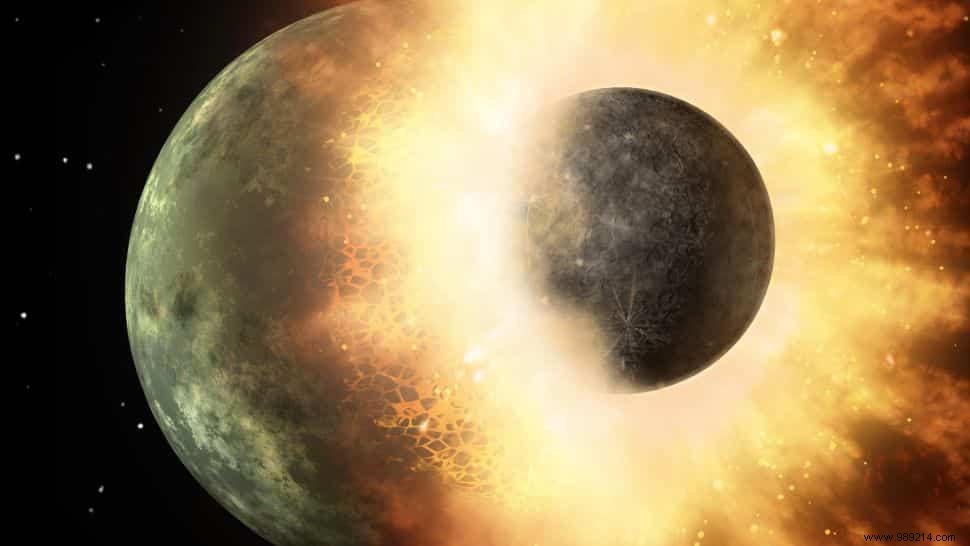In the movie "Moonfall", released on February 4, a force ejects the Moon from its orbit and sends it on a collision course with our planet. In reality, could a natural or other object really transform our satellite into a projectile capable of crashing into the Earth?
In the film industry, the name Roland Emmerich is often associated with the "mass destruction" model. After Independence Day, Godzilla, The Day After or even 2012, the director, who had become a little rarer in Hollywood during the 2010s before chaining several failures, is now making a comeback with "Moonfall », a film whose simple name is enough to sum up its scenario (the Moon crashes on earth). The question then arises:could such an impact really occur?
The Moon is a solid body surrounded by a very thin layer of gas (exosphere). According to the widely accepted theory, it would be the result of a massive impact between the young Earth and a smaller protoplanet called Theia that occurred 4.5 billion years ago. Today, the moon averages about 385,000 kilometers from Earth, with an estimated mass of 73.52 trillion tons, or 1/81 the mass of Earth.
That being said, the lunar surface is characterized by many craters of varying sizes. However, most of them were dug billions of years ago, when much more debris passed through the young solar system. And most have long since dissipated. In other words, the number of impacts has decreased considerably over time . And these days, "attacks" are rare. Also, asteroid collisions with the Moon are much less likely than collisions with Earth . Indeed, our planet is larger and more massive. She is therefore a prime target.

Near-Earth objects potentially dangerous for the Earth-Moon system are constantly monitored by the Center for Near Earth Object Studies (CNEOS), of the Jet Propulsion Laboratory (JPL) from NASA. To date, the CNEOS tracks approximately 28,000 objects sometimes approaching less than 1.3 astronomical units (194.5 million km) from the Earth. Is one of them likely to hit the Moon with enough power to knock it out of orbit?
Recall that for a near-Earth object to be considered a threat to Earth, it must be at least 140 meters in diameter. And for an asteroid impact to affect the moon's orbit, it would have to be at least as big… as the Moon itself .
Fortunately for us, none of the known asteroids in the Solar System reach the size required for this job. The largest known asteroid is about seventy times less massive than the Moon. You will find it in the main asteroid belt, between Mars and Jupiter, about 180 million kilometers away.
So the next time you see the Moon in the night sky, you can take comfort in knowing that it isn't going anywhere anytime soon.